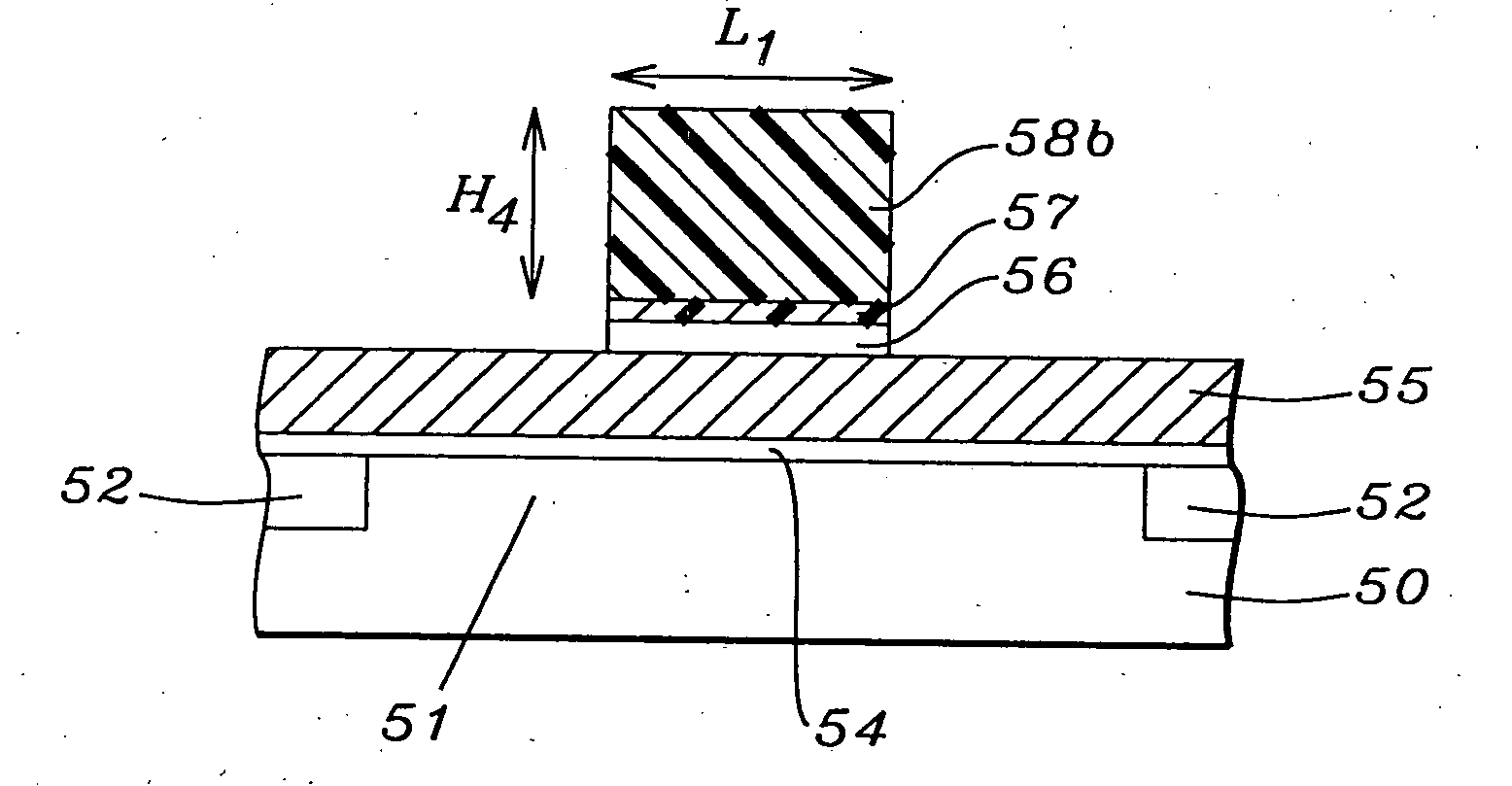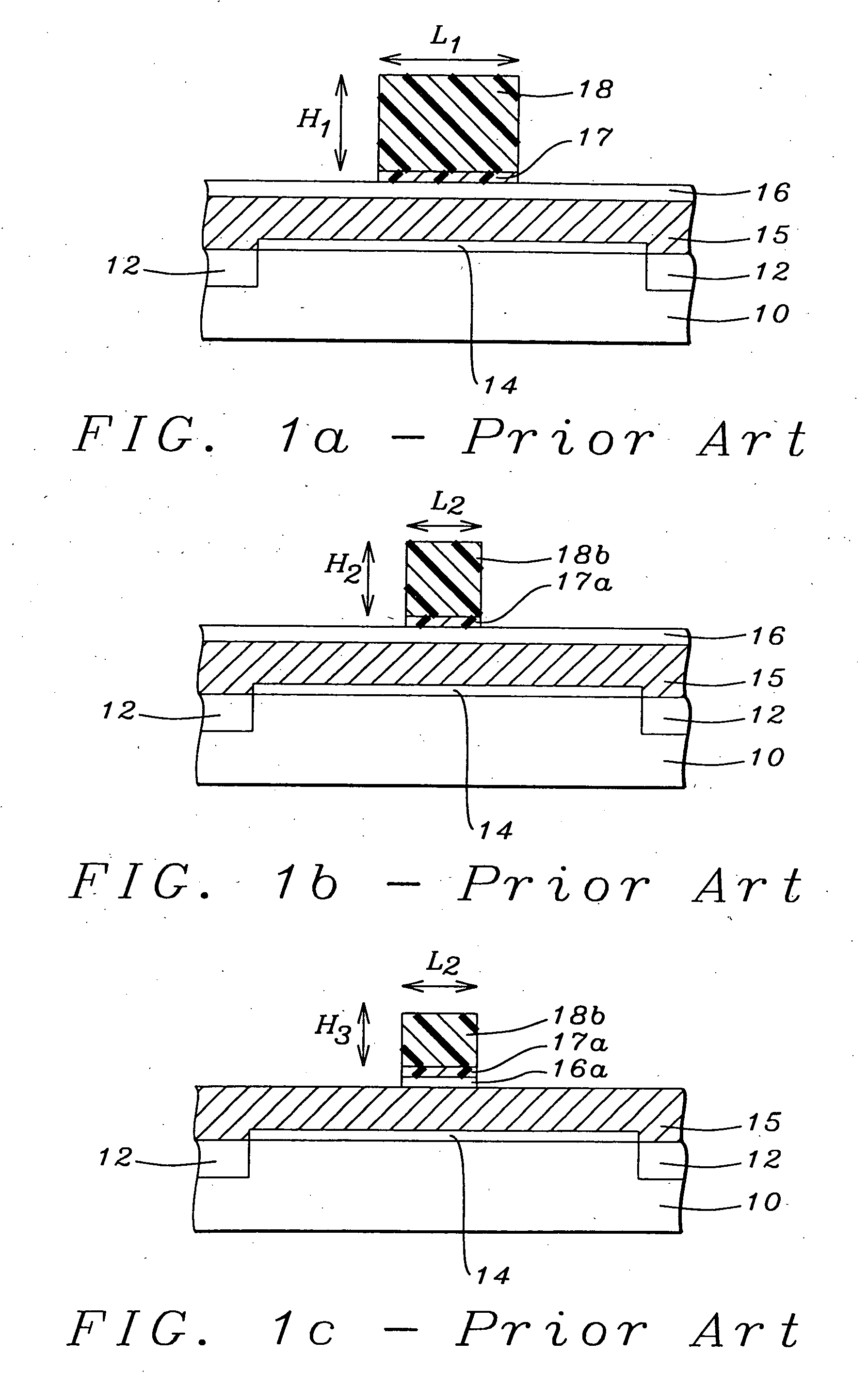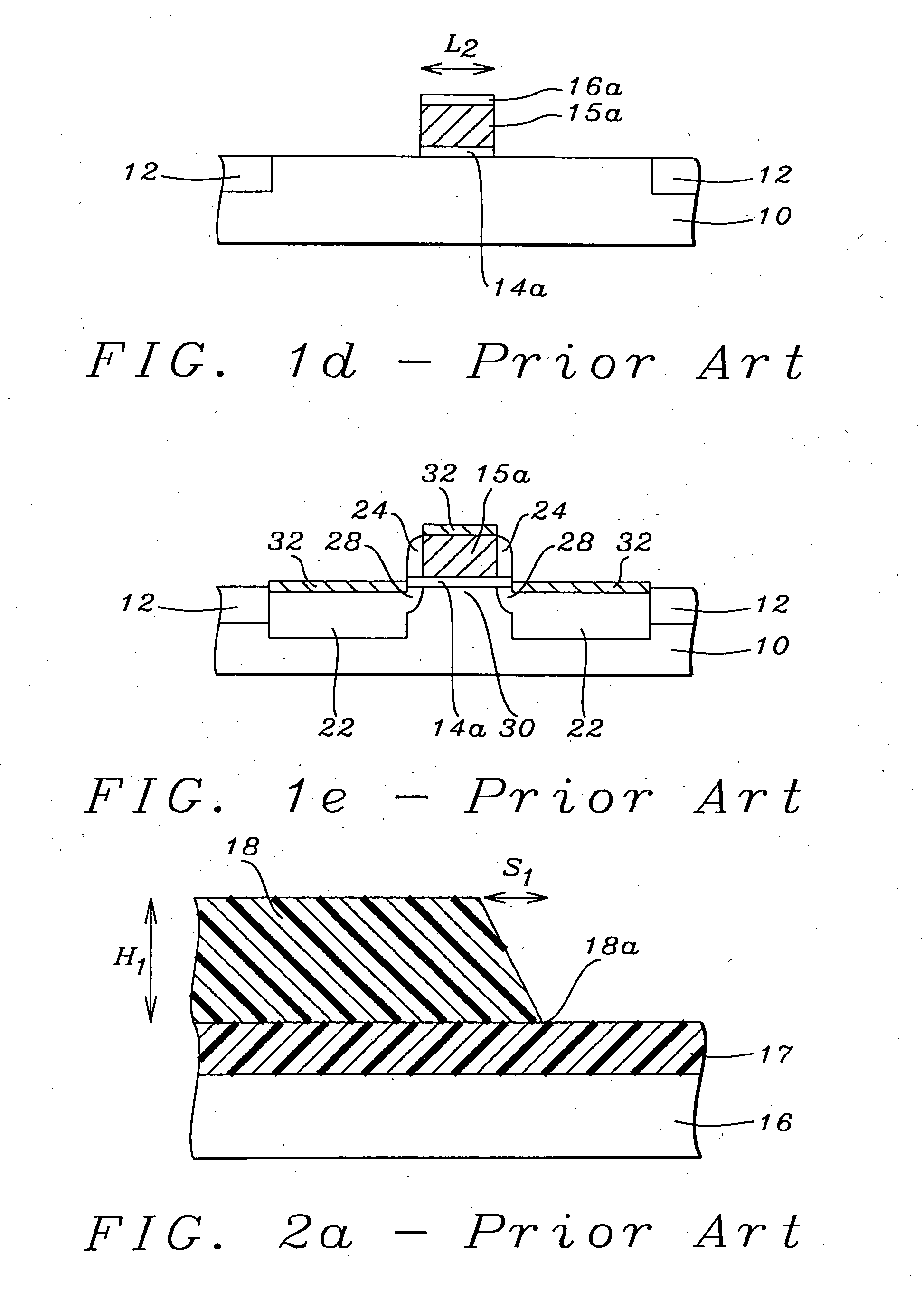Novel approach to improve line end shortening
a technology of line end and shortening, which is applied in the field of fabricating semiconductor structures, can solve the problems of insufficient narrow lb>1/b> to meet the requirements of a fast transistor, the inability to control the size of the photoresist less than about 100 nm, and the process latitude is improved, so as to achieve better control
- Summary
- Abstract
- Description
- Claims
- Application Information
AI Technical Summary
Benefits of technology
Problems solved by technology
Method used
Image
Examples
first embodiment
[0029] The first embodiment is illustrated in FIGS. 4a-4d. Referring to FIG. 4a, a substrate 50 that is typically silicon with a field implant of an impurity such as boron is provided and has an active area 51 located between two isolation regions 52. Isolation regions can be formed by a LOCOS method or in this case, shallow trench isolation (STI) features 52 are depicted. The STI regions 52 are filled with an insulating material such as silicon dioxide or a low k dielectric material. A gate dielectric layer 54 is formed on substrate 50 by a method such as chemical vapor deposition (CVD) and is comprised of silicon oxide, silicon nitride, or silicon carbide and has a thickness in the range of about 10 to 30 Angstroms. When gate dielectric layer 54 is silicon oxide, it may also be formed by placing substrate 50 in a thermal oxidation furnace with a dry oxygen ambient at approximately 600° C. to 800° C. Other methods such as RTO (rapid thermal oxidation) may also be used to grow an ox...
second embodiment
[0041] In a second embodiment, the method of the present invention is employed to form shallow trench isolation (STI) features in a substrate. Referring to FIG. 6a, a substrate 60 is provided which typically contains active and passive devices in a substructure (not shown). A silicon nitride layer 61 having a thickness of from 300 to 1000 Angstroms is deposited by a CVD method on the substrate 60. Then a hardmask 62 such as silicon oxynitride with a thickness between 200 and 800 Angstroms is deposited on the nitride layer 61. Optionally, an organic or inorganic ARC (not shown) is deposited on the hardmask to improve process latitude in a later photoresist patterning step.
[0042] A photoresist composition is then spin coated and patterned to form trench openings 64 and 65 that are separated by a photoresist layer 63 having a height H6 of between 1500 and 4000 Angstroms and a width L3. The photoresist composition is selected depending on the desired width L3 or on the width of trenches...
PUM
 Login to View More
Login to View More Abstract
Description
Claims
Application Information
 Login to View More
Login to View More - R&D
- Intellectual Property
- Life Sciences
- Materials
- Tech Scout
- Unparalleled Data Quality
- Higher Quality Content
- 60% Fewer Hallucinations
Browse by: Latest US Patents, China's latest patents, Technical Efficacy Thesaurus, Application Domain, Technology Topic, Popular Technical Reports.
© 2025 PatSnap. All rights reserved.Legal|Privacy policy|Modern Slavery Act Transparency Statement|Sitemap|About US| Contact US: help@patsnap.com



